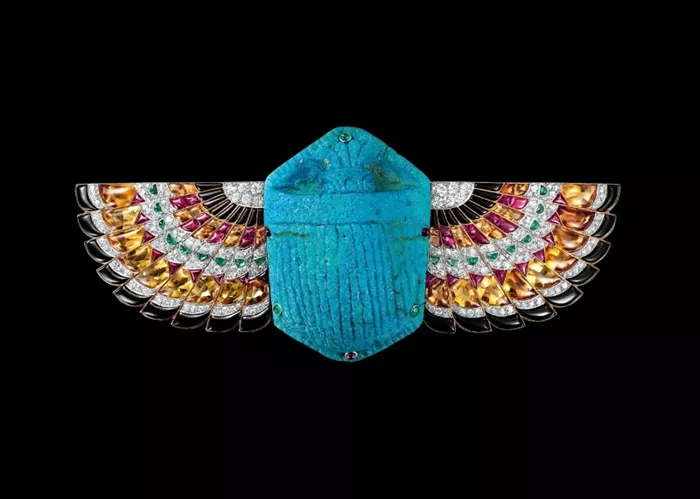The Victoria and Albert Museum in London is celebrating the legacy of Cartier with a new exhibition—the first dedicated to the French jewellery house in three decades. The showcase, which opens on April 12 and runs for seven months, offers a deep look into the history, craftsmanship, and global impact of the brand.
Cartier was founded in 1847 by Louis-François Cartier in Paris. Under his son Alfred and later his grandsons Louis, Pierre, and Jacques, the company grew into a leading name in luxury jewellery. They expanded its presence internationally by opening boutiques in Paris, London, and New York.
Cartier soon became a favourite among the world’s elite, especially the British royal family. This relationship began in the early 1900s when Edward VII asked Cartier to open a branch in London before his coronation in 1902. He commissioned 27 tiaras for the event and later called Cartier “the jeweller of kings, and the king of jewellers.” In 1904, the brand received a Royal Warrant, which it still holds today.
Now, visitors can explore Cartier’s royal connections and rich history at the V&A’s Sainsbury Gallery. Spanning 1,100 square metres, the exhibition features over 350 objects. These include jewels, watches, clocks, sketches, and accessories from the Cartier Collection, the Royal Collection, private collectors, and museums across the UK and abroad.
Exhibition designer Asif Khan said he aimed to create a “dreamscape where art and science converge.” He described the display as one where Cartier’s creations are “suspended in light, time and sound,” allowing history to come alive.
The exhibition is divided into three parts. The first focuses on the early years, when the three Cartier brothers helped turn a local Parisian business into a global brand. This section tells stories about their relationships with influential clients and their ability to create bespoke designs using advanced techniques.
One standout item is the Manchester Tiara, made in 1903 for Consuelo Montagu, the 8th Duchess of Manchester. She provided over 1,000 brilliant-cut diamonds and 400 rose-cut diamonds, which Cartier used to design a striking headpiece with scroll shapes and a flaming heart.
Another highlight is the Williamson Diamond brooch, made for Queen Elizabeth II in 1953, the year of her coronation. It features a rare 23.6-carat pink diamond gifted to her in 1947. Also on display is a rose brooch worn by Princess Margaret at her sister’s coronation.
This section also explores Cartier’s design influences from around the world. Pieces inspired by Garland, Art Deco, Middle Eastern, and South Asian styles reveal how Jacques Cartier travelled widely, including to India, Sri Lanka, and the Middle East, to find rare gems and new design ideas.
The second part of the exhibition focuses on Cartier’s most prized stones. Visitors will see rare rubies, large sapphires, and historic coloured diamonds. The section also highlights the high level of skill required to produce these pieces. Many were made in Cartier’s dedicated workshops to strict standards.
A key feature here is the evolution of Cartier’s famous panther motif. The first example, a 1914 wristwatch, is displayed alongside a 1978 panther bracelet made with pavé diamonds and onyx.
Visitors can also see some of Cartier’s most famous watches. The Santos, created in 1904, is known as the world’s first modern wristwatch. The Crash, a warped design from the 1960s, reflects the creativity of London’s youth culture during that era. A selection of mystery clocks, with hands that appear to float in mid-air, adds to the magic of this section.
Other standout items include the colourful Tutti Frutti collection, a jade necklace once owned by American heiress Barbara Hutton, a 101-carat vivid yellow diamond brooch known as the Allnatt, and a platinum tiara made in 1937, the year of King George VI’s coronation.
The final section looks at Cartier’s continued relevance in modern times. The brand still appeals to royalty, celebrities, and collectors alike. Some clients have even worked closely with Cartier to help design custom pieces with a contemporary twist.
One of the most famous items on view is the engagement ring worn by Grace Kelly. The 10.48-carat diamond ring, given to her by Prince Rainier III of Monaco, also appeared in her final film, High Society.
The exhibition ends with a display of headpieces that showcase Cartier’s creativity and technical expertise. These include the Opal Tiara, made for Mary Cavendish, Marchioness of Hartington in 1937; the Scroll Tiara from 1902, worn by Adele, Countess of Essex, Clementine Churchill, and singer Rihanna; and an Art Deco tiara from 1934 inspired by ancient Egypt, once worn by Begum Aga Khan III.
Curators Helen Molesworth and Rachel Garrahan described the V&A as the ideal place to honour Cartier’s role in shaping global style. “With its world-class collection, the V&A is the perfect stage to celebrate the pioneering achievements of Cartier,” they said. “We are excited to share Cartier’s most famous creations and also reveal previously unseen pieces that show how the brand continues to influence how we adorn ourselves today.”
Related topics:
- Can Aries Wear Yellow Sapphire? Unlock Its Benefits
- How to Clean Yellow Sapphire Ring: Step-by-Step Guide
- Jewelry Steals the Spotlight at the Met Gala 2025


